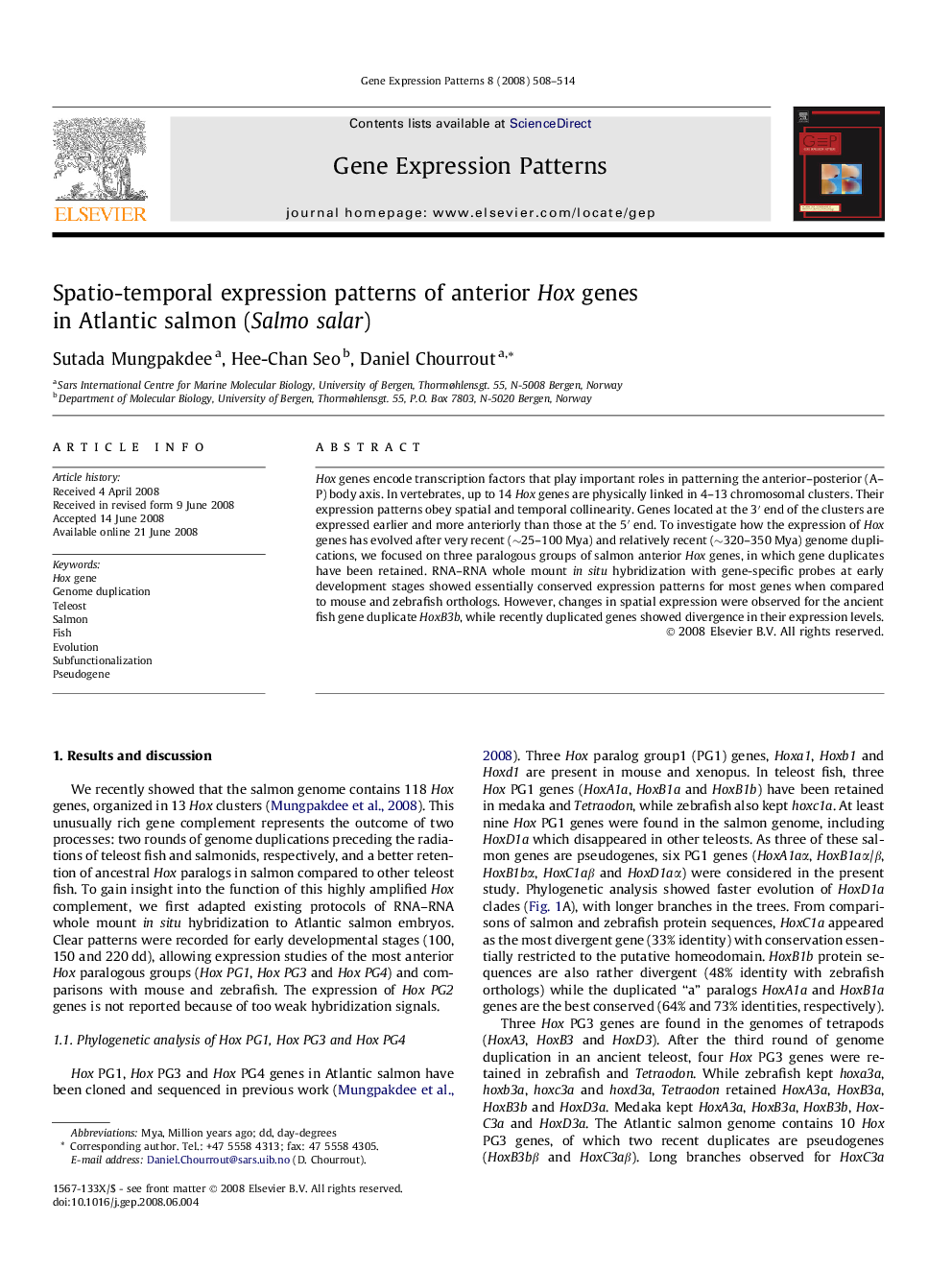| Article ID | Journal | Published Year | Pages | File Type |
|---|---|---|---|---|
| 2182473 | Gene Expression Patterns | 2008 | 7 Pages |
Hox genes encode transcription factors that play important roles in patterning the anterior–posterior (A–P) body axis. In vertebrates, up to 14 Hox genes are physically linked in 4–13 chromosomal clusters. Their expression patterns obey spatial and temporal collinearity. Genes located at the 3′ end of the clusters are expressed earlier and more anteriorly than those at the 5′ end. To investigate how the expression of Hox genes has evolved after very recent (∼25–100 Mya) and relatively recent (∼320–350 Mya) genome duplications, we focused on three paralogous groups of salmon anterior Hox genes, in which gene duplicates have been retained. RNA–RNA whole mount in situ hybridization with gene-specific probes at early development stages showed essentially conserved expression patterns for most genes when compared to mouse and zebrafish orthologs. However, changes in spatial expression were observed for the ancient fish gene duplicate HoxB3b, while recently duplicated genes showed divergence in their expression levels.
